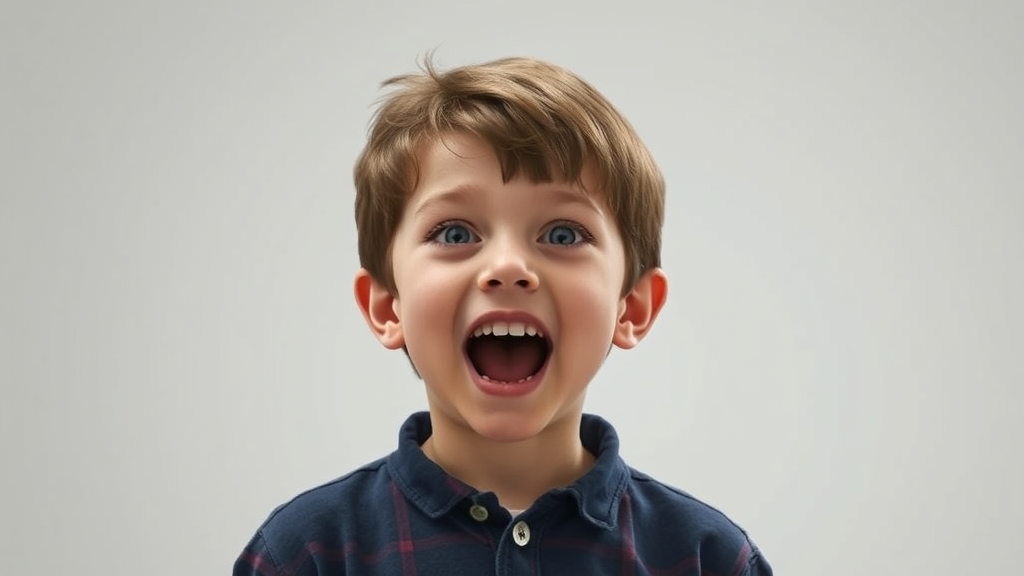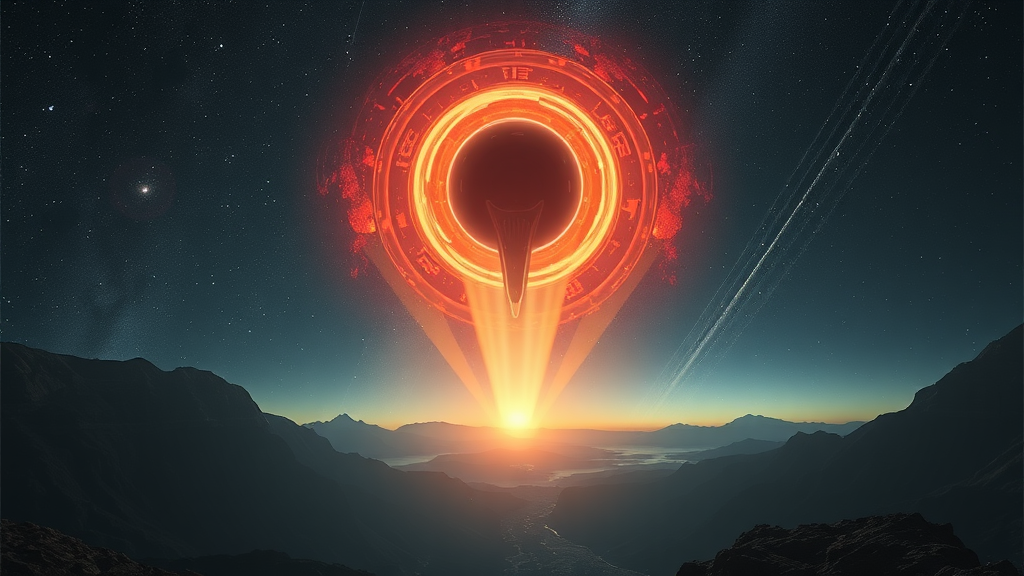This Island Vanished Overnight – Real Or Just Another Internet Illusion?

This Island Vanished Overnight – Mystery or Myth?
There are countless legends and stories that capture our imagination, but few are as fascinating as tales of islands that seemingly vanish overnight. People often find themselves wondering if these accounts are based on reality or are merely myths crafted by the creative minds of storytellers. One question that arises is: how can something as substantial as an island simply disappear? The answers are as varied as the stories themselves.
Many tales warn of mysterious islands that appeared in maps and news reports, only to find themselves missing without explanation. Often, these phenomena occur in remote areas, leaving behind little verified evidence. The intrigue surrounding such stories often combines elements of the supernatural or intriguing geographic phenomena. Here are several notable cases that have fueled speculation:
- Bermuda Triangle: Perhaps the most famous region associated with disappearances, some believe islands within this area have vanished. Witnesses speak of boats and aircraft vanishing without a trace.
- The Isle of Looe: Local legends tell of this island disappearing off the coast of England, leaving behind only a myth. The story claims it sunk overnight, but no credible evidence exists.
- Ambergris Caye: This island in Belize showcases shifting landscapes. While it hasn’t disappeared, rapid changes can make it seem that way to newcomers.
Some stories trace their roots to ancient tales of lost civilizations. The concept of land lost to the sea is evident in myths such as Atlantis. These tales can capture the imagination and educate about the potential consequences of climate change, geological shifts, and natural disasters.
Geographically, islands can vanish due to several factors that might explain some of the mystery behind their supposed disappearances:
- Rising Sea Levels: Climate change is responsible for rising sea levels. As coastlines shift and change, some areas that once thrived can disappear under the waves.
- Erosion: Natural erosion can lead to significant landscape changes in coastal areas over time. Some islands may slowly erode to the point of no longer being recognizable.
- Tectonic Activity: Earthquakes and volcanic eruptions can lead to the sudden disappearance of land. Some islands may be entirely submerged or altered dramatically.
For many, it’s easy to dismiss these tales as mere folklore. Yet, the emotional resonance they carry can prompt a deeper exploration of the ocean’s mysteries. The idea that such significant land masses could vanish overnight sparks curiosity and wonder, blending history with modern-day wonder and scientific inquiry.
However, the power of myth can sometimes overshadow facts. Many local legends may be rooted in historical events, but they become exaggerated over time. Misunderstandings about geography and sea travel can perpetuate these myths further. Consider these tips when trying to discern fact from fiction:
- Research Historical Context: Many stories may have historical bases, so check early maps or records that can shed light on claims of disappearing islands.
- Verify Scientific Evidence: Look for data from geological studies focused on climate change and tectonic movements. The science often provides clear explanations for mysterious phenomena.
- Explore Local History: Investigate local folklore. Often, stories of vanishing islands can be tied to cultural narratives that reflect the area’s relationship with nature.
This topic delves into a perpetually captivating discourse blending history, myth, and the intriguing nature of our planet. As you explore the idea of islands vanishing overnight, consider engaging in your own research. Use credible sources and verify claims as you sift through the stories—celebrating both the real and the mythical. Such exploration can yield a richer understanding of not just our coastal geography but of humanity’s need to find meaning in the natural world around us.
The Impact of Urban Legends on Public Perception
Urban legends captivate our imaginations and, at times, shape our beliefs and fears. These stories often reflect societal anxieties, conveying lessons and warnings wrapped in a narrative that feels genuine. Examining the impact of urban legends allows us to understand how these tales influence public perception and behaviors.
Urban legends are not merely entertaining anecdotes; they often serve to validate or challenge societal norms. For example, the story of “The Killer in the Backseat” revolves around the fear of being attacked in a seemingly safe environment—your own car. This narrative instills wariness among drivers and creates a culture of vigilance, particularly among women. Thus, the legend not only entertains but also reinforces the notion that danger lurks even in familiar settings.
These tales often emerge during times of social change or uncertainty. As circumstances shift, people may turn to urban legends as a means of grappling with emerging fears. For instance, legends surrounding the dangers of technology, like “The Facebook Killer” or stories about people being lured by strangers online, emphasize the risks associated with modern digital communication. This can lead to a growing mistrust of technology, affecting how individuals engage with social media and online interactions.
Urban legends are potent tools for shaping attitudes because they feel relatable and plausible. They tap into the collective emotion, creating a sense of shared understanding. This shared experience can foster a community spirit among those who believe in or know the legend. Additionally, these stories often travel through word-of-mouth, magnifying their influence as they change hands. The more people who share a story, the more likely it is that individuals will interpret it as truth.
Legends can also serve as contemporary folklore, reflecting cultural values and social norms. These tales often come loaded with lessons or moral implications that resonate within a particular community. Consider the famous tale of “The Babysitter and the Man Upstairs.” This legend plays on deep-seated fears of vulnerability and the protection of children. It serves as both a warning and a reminder of parental responsibilities, shaping public perception around safety and trust in childcare.
Here is a glimpse at various urban legends and their cultural implications:
| Urban Legend | Key Themes | Public Impact |
|---|---|---|
| The Vanishing Hitchhiker | Trust, Loss | Encourages caution while driving and awareness of one’s surroundings. |
| Alligators in the Sewers | Scare, Urban Fear | Reflection of fears surrounding urban decay and the unfamiliarity of city life. |
| The Choking Doberman | Panic, Trust in Pets | Raises worries about pets and the unexpected dangers they may pose or encounter. |
In today’s hyper-connected world, the speed at which urban legends spread is unprecedented. Social media platforms serve as fertile ground for these tales. The phenomenon of “fake news” and viral misinformation has intensified due to this rapid dissemination. A simple legend can be reshaped in seconds, leading to widespread belief in false narratives. This has profound implications on public perception, potentially skewing opinions on critical issues from public health to crime rates.
Moreover, urban legends can evoke stigma and perpetuate stereotypes. For instance, tales that involve certain races or socio-economic groups can contribute to negative biases. These legends, particularly when coupled with visual media, shape public perceptions in a way that can be damaging and long-lasting. Addressing these misconceptions becomes vital in fostering an inclusive society.
Urban legends serve as a mirror, reflecting the values, fears, and hopes of society. They provide insight into collective anxieties and allow us to examine how we react to these fears over time. By engaging with these narratives critically, we can see beyond the sensationalism and understand the underlying truths about our communities and ourselves.
While urban legends can entertain, they also wield significant power over our thoughts and actions. Understanding their impact can help in navigating the often tumultuous landscape of contemporary culture, proving that even the most whimsical tales have a lasting mark on public perception.
Exploring Real-Life Disappearances in Geography
Geography is filled with places of mystery, and among these are real-life disappearances that have captured the imagination of many. When we think of places that vanished or changed unexpectedly, it raises questions. What causes these phenomena? Are they merely myths, or do they have tangible explanations?
One famous example is the case of the island of Bermeja, which was believed to exist off the coast of Mexico. For years, this island appeared on maps until it suddenly disappeared from records in the late 20th century. When modern explorations attempted to locate it, they found only open water. Many theories emerged about its fate, ranging from natural erosion to man-made destruction. While some believe it to be an illusion, others argue it was simply overlooked in a changing geographical landscape.
This island provides an intriguing case study into how geography can distort perceptions. Here are key reasons why certain places may seemingly vanish:
- Natural Erosion: Over time, landscapes change due to natural processes like erosion, rising sea levels, and earthquakes.
- Lack of Accurate Mapping: Historical maps may not have detailed information, leading to confusion about the existence of certain places.
- Human Activity: Urban development, pollution, and climate change can alter or even completely remove geographical features.
Another instance involves the legendary island of Atlantis. While many view it as a myth, historical texts describe a powerful island civilization that disappeared beneath the waves. The story is often thought to reflect real-life events based on places that experienced disasters, like volcanic eruptions or tsunamis. This idea aligns with several archaeological explorations around the world that have uncovered ancient civilizations buried beneath the earth and sea.
Several other locations around the globe have developed reputations for mystifying disappearances. A few notable mentions include:
| Location | Details |
|---|---|
| Bermuda Triangle | Numerous ships and airplanes have reportedly disappeared under mysterious circumstances. |
| Lake Superior | This lake has claimed many shipwrecks, and rumors persist about hidden islands and underwater features. |
| Flying Dutchman | A ghost ship that is said to sail endlessly, disappearing from view in storms. |
Each of these places evokes curiosity and wonder about the forces that shape our world. Disappearances may result from environmental changes, but they also captivate the imagination and inspire stories. Looking at both natural occurrences and human activity helps to explain why some locations experience this phenomenon.
Tracking historical data provides further clarity. Researchers analyze geological surveys and satellite imagery to determine how landscapes shift over time. Comparing ancient maps with modern GPS data often reveals discrepancies that give insight into altered places. For instance, communities may build on wetlands without fully realizing they are adding to drainage issues that ultimately change the landscape.
As technology evolves, the possibilities for understanding these geographical mysteries expand. Scientists are employing advanced tools like LiDAR (Light Detection and Ranging) to explore areas that are difficult to access. This method has revealed hidden structures and landscapes obscured by vegetation, shining light on once-forgotten locations.
Ultimately, these real-life disappearances serve as a reminder that geography is fluid. Natural processes, human intervention, and shifting perceptions can all contribute to a place’s existence or disappearance. They encourage us to remain curious about what lies beneath the surface of maps and what stories await discovery in our ever-changing world.
Through exploration and research, we continue to uncover truths behind these disappearing phenomena. Whether they are mere illusions or documentable events, they reveal a deeper understanding of our planet and the complexities of nature that we are only beginning to grasp.
The Role of Social Media in Spreading Misinformation
In today’s digital age, social media plays a pivotal role in shaping public opinion and spreading information. However, one of the darker sides of this phenomenon is its ability to disseminate misinformation rapidly. Understanding how social media contributes to this issue can help you navigate the digital landscape more wisely.
How Misinformation Spreads on Social Media
Misinformation can spread like wildfire across social media platforms. Here’s how:
- Viral Sharing: Users often share content without verifying its authenticity. This can happen in seconds, allowing false information to reach a vast audience quickly.
- Emotional Appeal: Content that evokes strong emotions is more likely to be shared. Sensational stories or alarming news often spread because they trigger fear, anger, or shock.
- Echo Chambers: Algorithms personalize your social media feed based on your past interactions. This can create environments where only certain viewpoints are amplified, preventing exposure to factual information.
- Influencer Impact: Influencers can significantly affect public perception. When they share unverified information to their followers, it lends credibility to false claims.
Types of Misinformation Commonly Found
There are several categories of misinformation that frequently circulate on social media:
- Fake News: Entire articles or reports that have been fabricated.
- Hoaxes: Deliberate deception aimed at tricking people, often for entertainment or financial gain.
- Misleading Headlines: Articles that have factual content but are presented with sensationalized or misleading titles.
- Manipulated Images: Photos or videos that have been altered to mislead the viewer about the context or story.
The Dynamics of Sharing Misinformation
Understanding why people share misinformation can illuminate the problem:
- Desire for Connection: Users may share content to start conversations or connect with others, not realizing the information is false.
- Social Validation: When a piece of misinformation resonates with someone’s beliefs, they might share it to seek approval from their community.
- Lack of Media Literacy: Many users do not possess the skills needed to critically analyze the information they encounter online.
Consequences of Misinformation on Social Media
The impact of misinformation can be far-reaching, affecting various aspects of society:
| Area Affected | Consequences |
|---|---|
| Public Health | Misinformation about vaccines can lead to public hesitation, increasing the risk of disease outbreaks. |
| Politics | False claims can sway elections and undermine trust in democratic processes. |
| Social Cohesion | Misinformation can deepen divides within communities, leading to heightened tensions and conflict. |
Combatting Misinformation on Social Media
You can take steps to minimize the spread of misinformation:
- Verify Sources: Always check the credibility of the source before sharing content.
- Engage Thoughtfully: When engaging with posts, focus on constructive dialogue, emphasizing fact-checking and evidence-based arguments.
- Educate Yourself and Others: Share resources about media literacy and critical thinking skills.
- Report Misinformation: Most social media platforms allow you to flag false content. Do your part in reporting misinformation.
Understanding the nuanced role social media plays in spreading misinformation is essential for everyone. By being aware of its mechanisms and consequences, you can better protect yourself and others from the pitfalls of false information.
Uncovering Historical Events That Inspired Folklore
Folklore is a fascinating realm that blends history, culture, and imagination. Many tales and legends that have been passed down through generations are often rooted in real historical events. This connection between folklore and history allows us to understand the past while also appreciating the art of storytelling. Here, we delve into several historical events that inspired popular folklore tales.
The Legend of Atlantis
One of the most famous legends is that of Atlantis, a utopian civilization that supposedly vanished beneath the ocean. Origins of this tale can be traced back to the writings of the ancient Greek philosopher Plato. In his dialogues “Timaeus” and “Critias,” Plato described a powerful maritime nation that fell out of favor with the gods due to its hubris. Although many consider Atlantis a myth, some historians believe it may have been inspired by real civilizations like the Minoans on the island of Crete, which experienced a sudden decline due to a volcanic eruption.
The Trojan War and Its Impact on Folklore
The Trojan War, an epic conflict between the city of Troy and Greek states, has inspired countless stories, including Homer’s “Iliad” and “Odyssey.” These tales of war, heroism, and the involvement of gods and goddesses show how historical events can shape folklore. The destruction of Troy, believed to be based on actual events around the 12th century BCE, reveals themes such as love, betrayal, and revenge which resonate through various cultures even today.
King Arthur: A Blend of History and Myth
The figure of King Arthur represents another captivating instance of folklore rooted in historical context. While many historians argue that King Arthur was inspired by real leaders of the early medieval British Isles, the stories of Camelot, the Knights of the Round Table, and the quest for the Holy Grail are embellishments. These stories grew over centuries, combining elements of Celtic folklore, chivalric romance, and political commentary, reflecting the values and aspirations of society.
The Salem Witch Trials: A Cautionary Tale
The Salem Witch Trials of 1692 led to the execution of innocent people accused of witchcraft, and this harrowing event has become a rich source of folklore and cautionary tales. The story of the trials has morphed into numerous narratives of witches, the supernatural, and the consequences of mass hysteria. The history of these events provides a somber backdrop to stories that explore themes of fear, suspicion, and injustice, reminding us of the dangers of scapegoating and societal paranoia.
Folklore From Indigenous Cultures
Many indigenous cultures possess rich traditions that intertwine historical events with folklore. For instance, the Native American tribes have stories about the Great Flood, which bear similarities to the biblical account of Noah’s Ark. Such tales may recount the experiences of real floods that impacted these communities, evolving into legends that explain natural disasters and moral values.
Folklore Around the World
- Robin Hood: The tale of Robin Hood stealing from the rich to give to the poor is believed to be based on real outlaws from medieval England who fought against injustice, showcasing the spirit of rebellion against corrupt authorities.
- Bigfoot: This creature is often thought to be a myth, but many sightings can be traced back to local legends. These stories may be inspired by actual encounters with unknown primate species, reflecting our intrigue with the natural world.
- El Chupacabra: This blood-sucking creature is rooted in the experiences of farmers facing livestock attacks. While its existence is debated, it symbolizes fear of the unknown, likely stemming from real-life wildlife threats faced by rural communities.
Table of Folklore Events and Historical Inspirations
| Folklore | Historical Inspiration |
|---|---|
| Atlantis | Minoan Civilization and natural disasters |
| Trojan War | Ancient conflicts and archaeological findings at Troy |
| King Arthur | Historical kings and leaders in medieval Britain |
| Salem Witches | Mass hysteria rooted in social and political turmoil |
| Great Flood | Real flooding events in indigenous history |
Folklore serves as a powerful lens through which we can examine historical events. The tales we share today echo the experiences of those who came before us, melding fact with fiction in unique and engaging ways. By understanding the historical context behind these stories, we gain deeper insight into human experiences, values, and fears that continue to resonate across cultures and generations.
Conclusion
The tale of an island vanishing overnight captures our imagination and stirs curiosity about the unknown. Whether rooted in fact or fanciful myth, such stories reflect our desire to explore the boundaries of reality. They serve as a reminder of the delicate line between urban legends and historical truths, both of which shape public perception in profound ways.
This investigation into real-life disappearances in geography reveals that while some locations remain nameless and unsolved, others inspire folklore that transcends generations. The stories of places lost to time or natural disasters intrigue us, encouraging deeper examinations into our world’s geography.
Social media plays a significant role in transforming these tales into viral phenomena. While it can spread wonder and awe, it also opens the door to misinformation. A simple post can morph a curious anecdote into an accepted truth, often overshadowing careful research. As consumers of information, it’s crucial to approach these narratives with a critical eye, distinguishing fact from fiction.
Ultimately, the myths surrounding disappearing islands and locales teach us about our shared human experience—our fears, our curiosity, and our fascination with the unexplained. By examining the historical events that give rise to such lore, we not only honor the past but also recognize the lessons it imparts. Embracing the mystery can enrich our understanding of the world while reminding us to seek the truth beneath the surface. Engaging with these enigmatic stories keeps the spirit of exploration alive, encouraging us to question the universe around us and what may still lie undiscovered.



